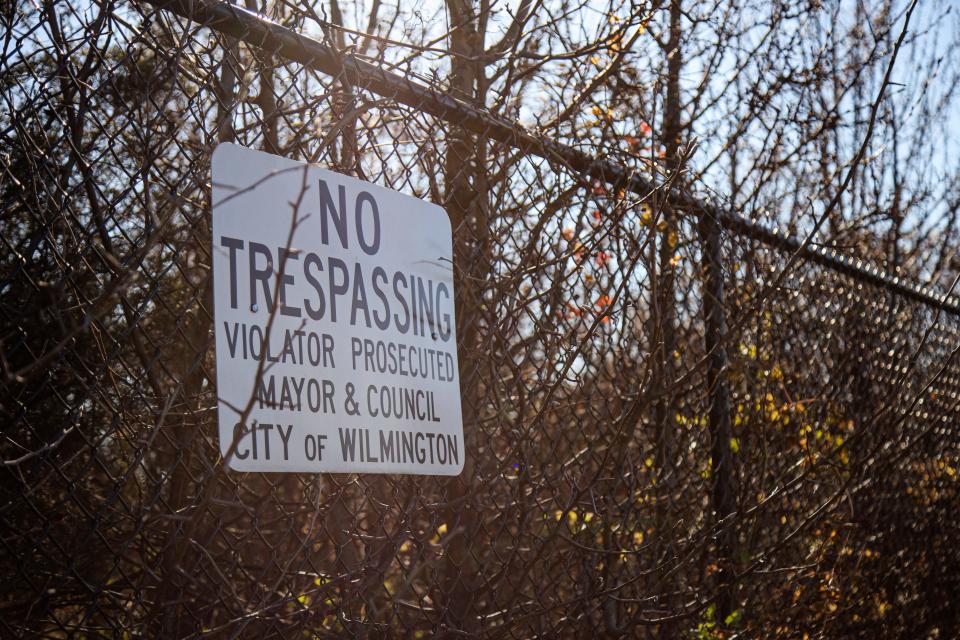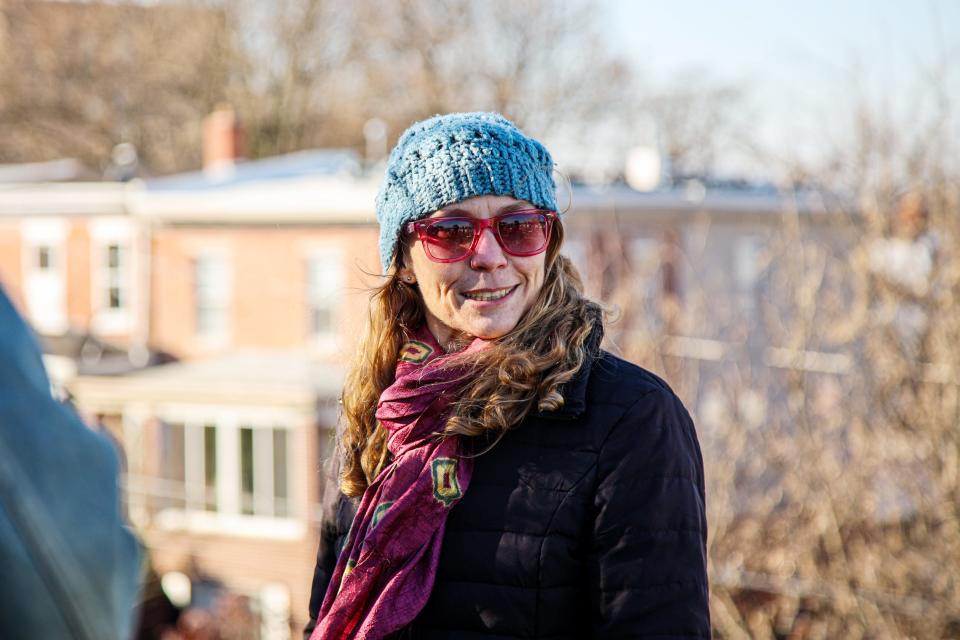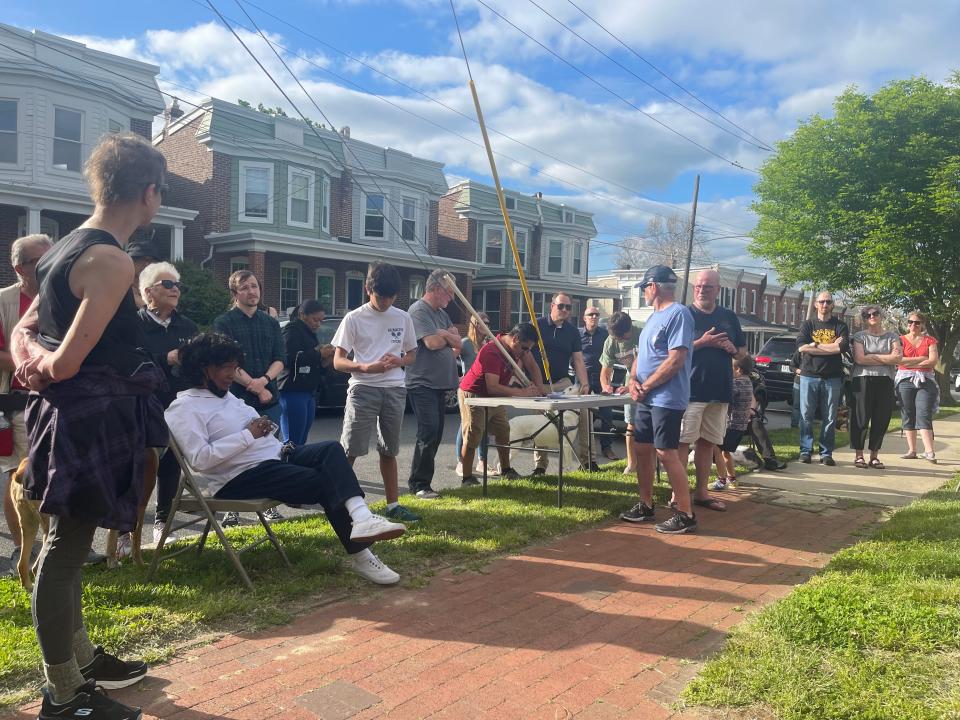What's in store for Wilmington's Rodney Reservoir, a community oasis for generations
The Rodney Reservoir, a cornerstone of Wilmington’s West Center City neighborhoods for generations, is about to undergo major changes for the first time in decades.
Just under 4 acres, the Rodney Reservoir takes up an entire city block in between the Hilltop and Little Italy neighborhoods. It sits adjacent to St. Francis Hospital, St. Anthony of Padua Church and the Mary Mother of Hope homeless shelter.
The site is currently a flight of stairs above street level, where community gardens, benches and honeybee farms are in use. A majority of the site is isolated with steep elevation and fencing closing off the former water reservoir.
It has a history as a gathering space for local residents, many with little or no yards of their own. For decades they have fought attempts to convert the site to residential housing.
Now that the city has agreed not to develop the land, the demolition of the dilapidated water tank is starting in mid-January.
But residents still have concerns about the site's future. They want a guarantee that Wilmington will not just preserve the space, but elevate it to a unique public park free of any chemical remnants.
Rodney Reservoir's history
The original Rodney Reservoir was built in 1863 as an open-air reservoir that supplied water to Wilmington before being abandoned in 1908. In 1915 the current Rodney Reservoir was built, a 7.5 million-gallon covered tank. The tank stayed in use until the 1990s when it was abandoned due to water quality issues.
Community members remember the reservoir holding other purposes as well, including a concert venue, an ice-skating rink, a sledding hill and a general landmark of the neighborhood.
In 2003, the former reservoir site was fenced off after the roof began to fall in.
In 2010, residents banded together to create a community garden on the lower portion of the site.
Today that lower portion still serves as a community garden and green space used for farm stand events, beekeeping and rows of raised gardening beds used by neighbors.
It's also been used as a site for students of the nearby Lewis Dual Language Elementary School for ecological education. Some students grow their own food.
Demolition and rebuild
Wilmington has planned to demolish the site for years, dating as far back as Jim Baker's mayoral administration in the early 2000s.
Earlier this year, Wilmington Mayor Mike Purzycki sought out $1.7 million from the General Assembly to clear the site and use it for housing.
Neighborhood groups like Green for the Greater Good fought hard against this, organizing weekly community meetings at the reservoir and pushing for the city to rethink its stance.
As a result of the community opposition and the zoning hurdles that the city would be required to go through, Purzycki pledged to return the site to a community park. A Rodney Reservoir working group was established, with a group of community members, political leaders and landscape engineers.
Design workshops were held in June in collaboration with the University of Delaware and were attended by over 80 neighbors and stakeholders. The meetings yielded a general vision for the Rodney Reservoir as a nature-focused and community-based park that celebrates the site's rich history and expands ecological education.
"The City is committed to preserving the Rodney Reservoir site as a beautiful, green public space for all to enjoy," Purzycki said. "The committee has selected a land architect who has already sought public input on final use and design for the property."
The topography of the site is important to community members like Jamila Davey, an active member of Green for the Greater Good. Neighbors have a long history of using the hill for recreational activities and Davey calls it the “lungs of the Little Italy neighborhood.”
Current demolition plans rely on flattening most of the steep elevation that currently takes up a majority of the site's area, but it will remain slightly elevated from the street. According to Purzycki, the only section of the reservoir property that will remain at street level will be Eighth Street. However, the architect and community task force will be the final deliberators in its design.
What to do about hazardous materials

Last February, state environment regulators were notified of high levels of cobalt in Rodney Reservoir’s soil. Additional sampling found the presence of heavy meals and deemed the site as hazardous if used for housing.
Green for the Greater Good wants state lawmakers to require Wilmington to remediate the hazardous substances or make the city sign a deed restriction prohibiting the site from being used for housing.
State environmental regulators said cleanup is not required for use as a park.
Vision for the future

Green for the Greater Good sent flyers to neighborhood residents over the summer informing them about the substances found in the soil and urging them to demand that the site be cleaned up and for more planning before demolition.
However, in November, Purzycki sent a letter to area residents defending the city’s plans to demolish and criticizing some of the neighbors who want demolition to hold off.
“I regret to say that several members of the community whom I appointed to the committee have since the beginning objected to our plans at every step of the way,” the letter said. “Only they can explain why.”
The letter called the content in the flyers categorically false and misleading.

Demolition is still planned to start mid-January, but no official design or construction plan is in place once demolition is completed.
Purzycki said that once demolition is completed, the property will be temporarily restored as an open, green space until the final design is ready to be implemented.
“It’s about retaining a sense of place,” Davey said. “We see so much stuff getting knocked down and flattened. The ability to have a unique place that the people’s memories can still be attached to. ... That’s part of the opportunity.”
Molly McVety covers community and environmental issues around Delaware. Contact her at mmcvety@delawareonline.com. Follow her on Twitter @mollymcvety.
This article originally appeared on Delaware News Journal: Rodney Reservoir's demolition looms; community members want a plan

